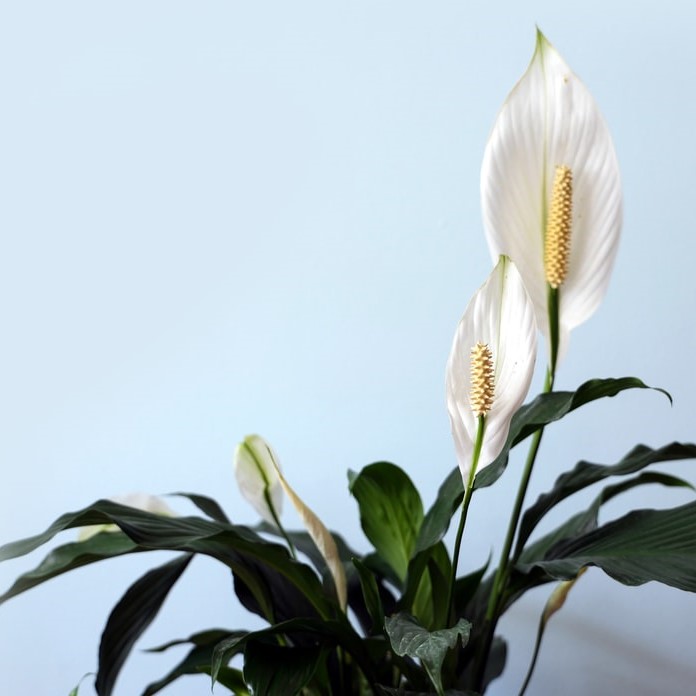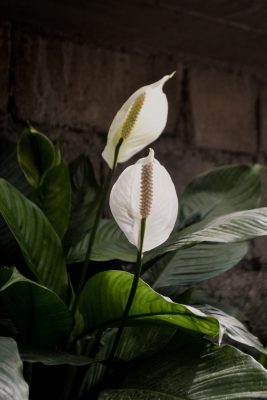Plant Care
Peace Lily Care
These beautiful indoor plants are full of lush green leaves and bloom almost constantly. They’re easy to care for and highly adaptable to many growing environments.
Light – While Peace Lilies do best in moderate, to bright, indirect light, they’re very tolerant of low light too, although they will flower less as a result. Avoid direct sunlight, which can scorch the leaves.
Water – Water once the soil had dried out approximately half way. If you aren’t sure, don’t water. Peace Lilies are more than happy to let you know they need water by “fainting,” a temporary wilting of the leaves that lets you know it’s thirsty. Be careful not to let it stay in this condition for too long as it might not recover. Avoid overwatering, which can lead to yellowing and browning of the leaves and eventual plant decline.
Soil – Moist, well-draining soil like Espoma Potting Soil. Peace Lilies don’t want to be dry for too long, add vermiculite if your soil is drying out too quickly or water more frequently.
Temperature – Peace Lilies prefer temperatures between 65° and 80°. Don’t expose to temperatures below 55° and protect from drafts.
Humidity – Peace Lilies prefer high levels of humidity. A nearby humidifier, regular misting or a tray of water and pebbles are easy ways of increasing humidity levels. If you have the space, a bathroom is a great location for a Peace Lily.
Fertilization – Fertilize approximately once a month with a balanced fertilizer, like Bonide Liquid Plant Food, spring and summer. There’s no need to fertilize in winter.
Size – They average 2 to 4 feet tall and wide.
Repotting – Peace Lilies actually enjoying being pot bound so don’t repot too often. It’s time to repot once you start having to water more frequently. Select a container no more than 2 sizes larger than the current pot and that it has good drainage.
Propagation – The easiest method of propagation is by dividing the plant.
Toxicity – Mildly toxic to people and pets when ingested.



